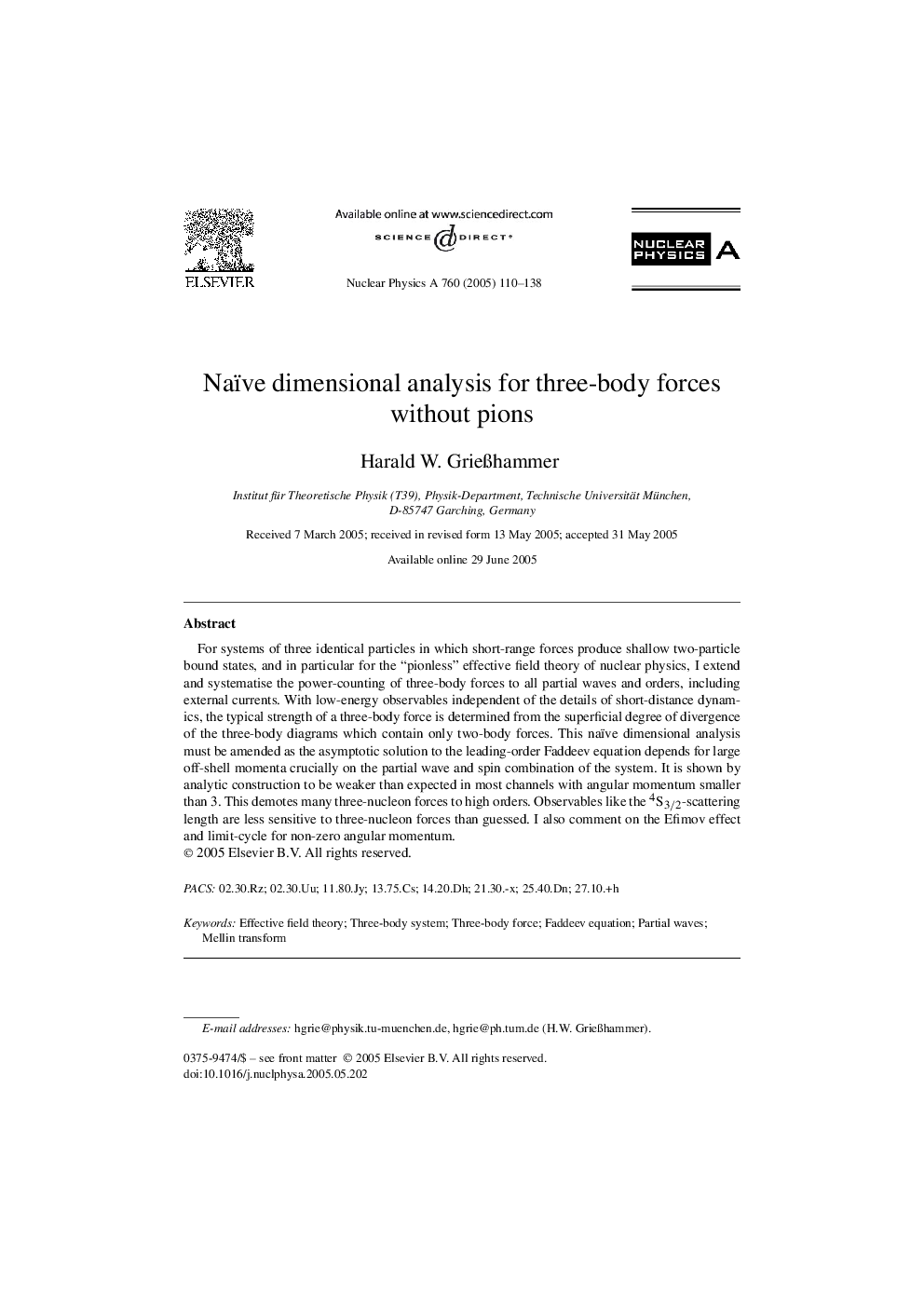| Article ID | Journal | Published Year | Pages | File Type |
|---|---|---|---|---|
| 9850868 | Nuclear Physics A | 2005 | 29 Pages |
Abstract
For systems of three identical particles in which short-range forces produce shallow two-particle bound states, and in particular for the “pionless” effective field theory of nuclear physics, I extend and systematise the power-counting of three-body forces to all partial waves and orders, including external currents. With low-energy observables independent of the details of short-distance dynamics, the typical strength of a three-body force is determined from the superficial degree of divergence of the three-body diagrams which contain only two-body forces. This naïve dimensional analysis must be amended as the asymptotic solution to the leading-order Faddeev equation depends for large off-shell momenta crucially on the partial wave and spin combination of the system. It is shown by analytic construction to be weaker than expected in most channels with angular momentum smaller than 3. This demotes many three-nucleon forces to high orders. Observables like the 4S3/2-scattering length are less sensitive to three-nucleon forces than guessed. I also comment on the Efimov effect and limit-cycle for non-zero angular momentum.
Keywords
Related Topics
Physical Sciences and Engineering
Physics and Astronomy
Nuclear and High Energy Physics
Authors
Harald W. GrieÃhammer,
